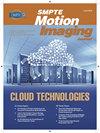Can ST 2059-2 Benefit From PTP Version 2.1?
Q3 Engineering
引用次数: 0
Abstract
With the publication of version 2.0 of the IEEE 1588 Standard for accurate time transfer over packet networks in 2008, the Precision Time Protocol (PTP) quickly became the only viable clock synchronization technology for all application domains relying on ethernet as a transport medium. PTP was deliberately defined in highly generic terms, allowing it to be tailored to application-specific requirements via PTP profiles. The SMPTE ST 2059–2 standard is the PTP profile for the broadcasting industry and a crucial element for any all-IP studio deployment. In 2019, the IEEE published a new version of the IEEE 1588 standard (PTP v2.1), where PTP was enhanced with several interesting optional features aimed primarily at improving the overall reliability of PTP, especially for larger deployments. In this article, we explain all major new features of PTP v2.1 and investigate to what extent broadcasting applications may benefit from adopting them as part of a new version of the ST 2059–2 PTP profile. Specific focus will be put on possible implications with respect to implementation efforts and operating requirements. We analyze whether the overall reliability of PTP can be improved by adding new features such as PTP security or extended monitoring. The high-accuracy extensions to PTP v2.1 will be described together with a rough effort estimate required to develop and deploy products supporting subnanosecond accuracy. The article concludes with a list of recommendations summarizing the benefits of these new features for deploying broadcasting networks at scale.st2059 -2能从PTP 2.1版本中受益吗?
随着2008年IEEE 1588标准2.0版在分组网络上精确时间传输的发布,精确时间协议(PTP)迅速成为所有依赖以太网作为传输介质的应用领域唯一可行的时钟同步技术。PTP是故意用高度通用的术语定义的,允许它通过PTP配置文件根据应用程序的特定要求进行定制。SMPTE ST 2059–2标准是广播行业的PTP配置文件,也是任何全IP演播室部署的关键元素。2019年,IEEE发布了IEEE 1588标准的新版本(PTP v2.1),其中PTP通过几个有趣的可选功能进行了增强,主要旨在提高PTP的整体可靠性,尤其是对于大型部署。在这篇文章中,我们解释了PTP v2.1的所有主要新功能,并研究了广播应用程序将它们作为ST 2059–2 PTP配置文件的新版本的一部分可以在多大程度上受益。具体重点将放在对执行工作和业务要求可能产生的影响上。我们分析了是否可以通过添加PTP安全性或扩展监控等新功能来提高PTP的整体可靠性。PTP v2.1的高精度扩展将与开发和部署支持亚纳秒精度的产品所需的粗略工作量估计一起进行描述。文章最后列出了一系列建议,总结了这些新功能对大规模部署广播网络的好处。
本文章由计算机程序翻译,如有差异,请以英文原文为准。
求助全文
约1分钟内获得全文
求助全文
来源期刊

SMPTE Motion Imaging Journal
工程技术-成像科学与照相技术
CiteScore
0.60
自引率
0.00%
发文量
0
审稿时长
>12 weeks
期刊介绍:
The SMPTE Motion Imaging Journal is the key publication of the Society, consistently ranked by our members as the most valuable benefit of their SMPTE membership. Each issue of the Journal explores a theme in great depth, with peer-reviewed technical articles from leading academics, researchers and engineers working at the top companies worldwide.
You''ll expand your knowledge on topics like image processing, display technologies, audio, compression, standards, digital cinema, distribution and machine learning and much more. For additional coverage of each month''s topic, the Journal features more exclusive articles online.
 求助内容:
求助内容: 应助结果提醒方式:
应助结果提醒方式:


